Monthly Archives: October 2024
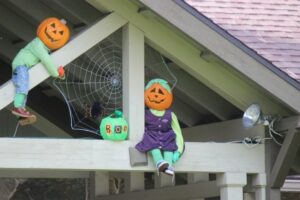
 Halloween in the United States traces its origins to the customs of European immigrants, especially those from Ireland and Scotland. The term “Halloween” is derived from “All Hallow’s Eve,” which is the night before the Christian sacred observances of All Hallow’s Day on November 1st and All Souls’ Day on November 2nd. Similar to other significant Christian dates, it included vigils starting the previous evening. This trio of days is known as Allhallowtide, a time when Christians pay homage to all saints and offer prayers for the souls that have passed away recently. People pray for the dead for several reasons…among them, hope for salvation (it was thought that prayers express hope that God will free the deceased from sin and prepare a place in heaven), coping with bereavement (it was thought that praying for the dead helps ordinary Christians deal with loss), charity and atonement (it was thought that we can do acts of charity for the departed to help atone for their sins)…or so they believe. I don’t personally believe that our prayers for the dead will do these things, but that was the tradition.
Halloween in the United States traces its origins to the customs of European immigrants, especially those from Ireland and Scotland. The term “Halloween” is derived from “All Hallow’s Eve,” which is the night before the Christian sacred observances of All Hallow’s Day on November 1st and All Souls’ Day on November 2nd. Similar to other significant Christian dates, it included vigils starting the previous evening. This trio of days is known as Allhallowtide, a time when Christians pay homage to all saints and offer prayers for the souls that have passed away recently. People pray for the dead for several reasons…among them, hope for salvation (it was thought that prayers express hope that God will free the deceased from sin and prepare a place in heaven), coping with bereavement (it was thought that praying for the dead helps ordinary Christians deal with loss), charity and atonement (it was thought that we can do acts of charity for the departed to help atone for their sins)…or so they believe. I don’t personally believe that our prayers for the dead will do these things, but that was the tradition.
Of course, there are other traditions that have come into being concerning Halloween. Some traditions take on  “the darker side” and some keep things purely secular, saying that Halloween is just a day of kids costumes and free candy. For the kids, it seems that while the costumes are cool, having a huge sack of candy, that will supposedly be under their complete control, is beyond the coolest of their imaginations. Of course, most parents won’t allow the child to have complete control of so much candy, but hey, a kid can dream.
“the darker side” and some keep things purely secular, saying that Halloween is just a day of kids costumes and free candy. For the kids, it seems that while the costumes are cool, having a huge sack of candy, that will supposedly be under their complete control, is beyond the coolest of their imaginations. Of course, most parents won’t allow the child to have complete control of so much candy, but hey, a kid can dream.
In colonial America, Halloween was not celebrated as it is today. The New England Puritans strongly opposed this holiday, along with many others. Some historians note that Anglican colonists in the southern United States and Catholic colonists in Maryland observed All Hallow’s Eve in their church calendars. Nevertheless, it did not become a significant holiday until the mass immigration of the Irish and Scots in the 19th century. The Irish and Scottish immigrants introduced customs like carving turnips, creating jack-o-lanterns, and igniting bonfires. These traditions merged with those of other communities in America. Initially, pumpkin carving in the United States was linked to harvest time, but eventually it became a Halloween staple. In Cajun regions, influenced by French culture, night masses were held, blessed candles were placed on graves, and families often spent the entire night beside their loved ones’ resting places.
Personally, I like the cute little costumes the little kids wear, and how excited they are when someone gives 
 them candy. I saw a commercial in which a boy tells his dad what he loves about Halloween…that people give him KitKats for free. It doesn’t faze the boy at all, when his dad tells him that he’s 8 and therefore all his KitKats are free. The boy isn’t concerned about that, he just keeps on talking about why he loves the day. However you celebrate, have a safe and happy Halloween.
them candy. I saw a commercial in which a boy tells his dad what he loves about Halloween…that people give him KitKats for free. It doesn’t faze the boy at all, when his dad tells him that he’s 8 and therefore all his KitKats are free. The boy isn’t concerned about that, he just keeps on talking about why he loves the day. However you celebrate, have a safe and happy Halloween.

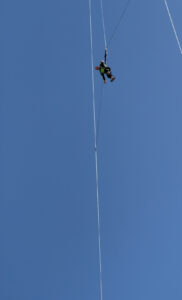 My nephew, Matt Miller Has been with my niece, Michelle Miller since they were in 8th grade. Theirs was to be a lifelong friendship that blossomed into love. Now they have been married for a little over three years and things keep getting better and better for them. This year, they have done quite a bit of traveling, and Matt, brave (or maybe crazy) guy that he is decided, along with his dad and aunt, to jump off the stratosphere in Las Vegas! Yikes!! Of course, that is a tourist attraction these days, but they truly do jump off of the building. They are hooked to a bungee cord, and it’s a controlled jump, but I’m pretty sure I would lose my lunch doing that. Nevertheless, Matt, his dad, and aunt, all had a great time doing it.
My nephew, Matt Miller Has been with my niece, Michelle Miller since they were in 8th grade. Theirs was to be a lifelong friendship that blossomed into love. Now they have been married for a little over three years and things keep getting better and better for them. This year, they have done quite a bit of traveling, and Matt, brave (or maybe crazy) guy that he is decided, along with his dad and aunt, to jump off the stratosphere in Las Vegas! Yikes!! Of course, that is a tourist attraction these days, but they truly do jump off of the building. They are hooked to a bungee cord, and it’s a controlled jump, but I’m pretty sure I would lose my lunch doing that. Nevertheless, Matt, his dad, and aunt, all had a great time doing it.
Matt and Michelle also did a lot of camping and hanging out with our dogs at his parents’ pool. On August 14th, they celebrated their 3rd anniversary up at the cabin on Casper Mountain, where we got married. Their third year of marriage also seemed like the perfect time to buy a house, so they took that logical next step. They are so excited about their new house, but like many people these days, they bought a fixer upper, and so the work begins. I know it will be very rewarding when it is done.


The home purchase is kind of a funny too. They knew that the home was going to need a lot of work, but when you get a good deal, you have to go for it. So, they moved into the lower level of the house, and they’ve been very busy remodeling the top floor entirely. You just never know what you are going to run into, and this remodel has been crazy. It ended up being a total gut job. They took it all the way down the nothing. Nevertheless, they are very excited to start rebuilding. It wasn’t that the “bones” of the house were bad, it’s just that everything in the house was from the 70’s era. It was completely outdated. To make matters worse, the previous owners smoked in there for 30 years, so it has taken a lot of work to clean it up. Still, when it’s all done, it is going to be an amazing house, and it will have their stamp on it, making it even more special.


While Matt and Michelle have been very busy with the new house, they still managed to take a little time out for a Broncos game. A guy can’t be expected to give up his sports, you know. Matt is an avid hunter, fisherman, and of course, his loves football, so I’m glad they got to go to a game or two. That will also make it easier to get back to work on the new house. I can’t wait to see the finished product. I know it’s going to look amazing. Today is Matt’s birthday. Happy birthday Matt!! Have a great day!! We love you!!
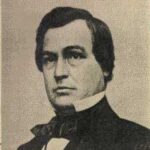
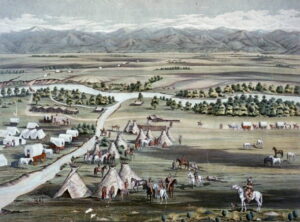 Have you ever wondered how a city got its start and its name? For one small frontier town in Kansas Territory, United States, it all began on October 29, 1858, when the first store opened. The store was probably situated near the confluence of the South Platte River and Cherry Creek, the present-day location of central Denver. This junction of rivers also served as a cultural crossroads between the Southern Arapaho and white settlers pursuing gold rumors. One short month later the small frontier town would take on the name of Denver in a shameless ploy to curry favor with Kansas Territorial Governor James W Denver.
Have you ever wondered how a city got its start and its name? For one small frontier town in Kansas Territory, United States, it all began on October 29, 1858, when the first store opened. The store was probably situated near the confluence of the South Platte River and Cherry Creek, the present-day location of central Denver. This junction of rivers also served as a cultural crossroads between the Southern Arapaho and white settlers pursuing gold rumors. One short month later the small frontier town would take on the name of Denver in a shameless ploy to curry favor with Kansas Territorial Governor James W Denver.
Denver was conceived by a town promoter and real estate salesman from Kansas named William H Larimer Jr, and that first store was established to cater to miners extracting placer gold found a year earlier at the confluence of Cherry Creek and the South Platte River. Many small frontier towns have simply become ghost towns now, but that was not to be the case for Denver. By 1859, the area had seen an influx of tens of thousands of gold seekers. Still, it’s existence would not be without struggle. The placer deposits were  diminishing, prompting most miners to either return home or venture westward into the mountains in pursuit of the more abundant veins.
diminishing, prompting most miners to either return home or venture westward into the mountains in pursuit of the more abundant veins.
By 1860, Larimer’s fledgling town was on the brink of failure. Despite its central location for servicing mining camps along the Rocky Mountain Front Range, Denver lacked the necessary rail and water transportation routes for affordable goods delivery. The transcontinental Union Pacific Railroad, launched in 1869, initially bypassed Denver. However, in 1870, Denver started to break free from its geographical isolation when the Kansas Pacific Railroad arrived from the east and the 105-mile Denver Pacific Railway connected Denver to the Union Pacific line at Cheyenne. Subsequent rail lines linked Denver with the flourishing mining areas in the Rockies, and by the mid-1870s, Denver was prospering as a railroad hub and a focal point of the western mining industry. The railroads had saved the town.
By 1890, Denver’s population exceeded 106,000, ranking it as the 26th largest urban area in the United States and giving it the moniker “Queen City of the Plains.” The Silver Panic of 1893 abruptly halted the economic 
 boom, which was only partially revived by the 1894 gold discoveries at Cripple Creek. So, there was still some concern about the viability of the city. The increasing importance of farming and ranching helped stabilize the city’s economy by reducing reliance on mining and quite possibly saving the city. Still, the cyclical nature of economic booms and busts continues as a dominant force in Denver, as well as in many other western cities, for much of the 20th century.
boom, which was only partially revived by the 1894 gold discoveries at Cripple Creek. So, there was still some concern about the viability of the city. The increasing importance of farming and ranching helped stabilize the city’s economy by reducing reliance on mining and quite possibly saving the city. Still, the cyclical nature of economic booms and busts continues as a dominant force in Denver, as well as in many other western cities, for much of the 20th century.

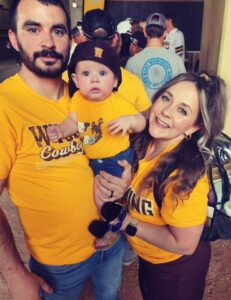 In this family, I think we all feel like we will always love Chris Kirk, because he was the guy who game my grandniece, Siara Kirk her smile back, after a very rough year. Since that fateful day, when Siara made the first move, Chris has proven himself to be, as Siara says, the ultimate husband, and now also the ultimate dad. Since their meeting in late September 2021, Chris and Siara have married, and added a sweet little son, Nathanial to their family. Chris and Nathanial (Nathan) are definitely BFFs (Best Friends Forever), because Chris spends most of the weekdays he has off with Nathan when the baby isn’t at Siara’s mom, Chantel Balcerzak’s house. Chris and Siara bought the house next door to her parents, Dave and Chantel, and they couldn’t be happier about this close family connection, and the ease of daycare when Chris and Siara are working.
In this family, I think we all feel like we will always love Chris Kirk, because he was the guy who game my grandniece, Siara Kirk her smile back, after a very rough year. Since that fateful day, when Siara made the first move, Chris has proven himself to be, as Siara says, the ultimate husband, and now also the ultimate dad. Since their meeting in late September 2021, Chris and Siara have married, and added a sweet little son, Nathanial to their family. Chris and Nathanial (Nathan) are definitely BFFs (Best Friends Forever), because Chris spends most of the weekdays he has off with Nathan when the baby isn’t at Siara’s mom, Chantel Balcerzak’s house. Chris and Siara bought the house next door to her parents, Dave and Chantel, and they couldn’t be happier about this close family connection, and the ease of daycare when Chris and Siara are working.
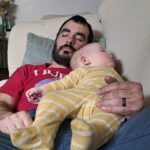
 Chris and Siara want their marriage to be a loving foundation for their children, so they came up with a plan that no matter what, when either of us got home from work, we would kiss each other first, then the babies’ second. They want to show the kids that mommy and daddy love and respect each other. There is a stability in knowing that your parents are still in love with each other, no matter how many years they have been together. I remember my own parents kissing in the kitchen, and how my sisters and I would dance around them singing “Mommy and Daddy are kissing!!” It was a silly little song, but we were never embarrassed by their kissing, and we always knew they loved each other. We felt stable and
Chris and Siara want their marriage to be a loving foundation for their children, so they came up with a plan that no matter what, when either of us got home from work, we would kiss each other first, then the babies’ second. They want to show the kids that mommy and daddy love and respect each other. There is a stability in knowing that your parents are still in love with each other, no matter how many years they have been together. I remember my own parents kissing in the kitchen, and how my sisters and I would dance around them singing “Mommy and Daddy are kissing!!” It was a silly little song, but we were never embarrassed by their kissing, and we always knew they loved each other. We felt stable and 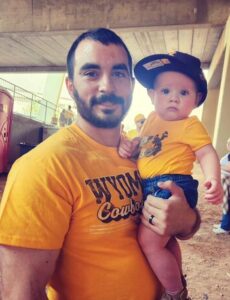
 comfortable that they were staying together until death parted them, which they did.
comfortable that they were staying together until death parted them, which they did.
Siara says, “We still laugh in bed over something funny trying not to wake Nathan up like when kids try not to wake their parents up.” Almost like they should be asleep, and they are “sneaking” to stay up late. Hahaha!! I like the “little kid” part that still lives inside of Chris and Siara. Who needs to grow up too quickly…not them, for sure. While Chris and Siara want to stay young at heart, I also think that they have a very solid plan for building a solid marriage, and stable home for their family. Today is Chris’ birthday. Happy birthday Chris!! Have a great day!! We love you!!

 My niece, Dustie Masterson has had a very busy year. She is the assistant manager of Walgreen’s in Casper, and she has been taking college classes to better herself for her job and future positions within Walgreen’s. My nephew, Rob Masterson is so very proud of his wife, and he couldn’t wait to tell me that she is now a certified pharmacy tech in Wyoming. When she is finished with her classes, she will be certified nationwide. She is also certified to give immunizations. These are big steps toward managership within Walgreen’s. Even with her classes, Dustie spends a lot of time at Walgreen’s. I know that makes sense, since she is assistant manager, but to me she is almost a fixture. Every time I am there, Dustie is there. She is very dedicated.
My niece, Dustie Masterson has had a very busy year. She is the assistant manager of Walgreen’s in Casper, and she has been taking college classes to better herself for her job and future positions within Walgreen’s. My nephew, Rob Masterson is so very proud of his wife, and he couldn’t wait to tell me that she is now a certified pharmacy tech in Wyoming. When she is finished with her classes, she will be certified nationwide. She is also certified to give immunizations. These are big steps toward managership within Walgreen’s. Even with her classes, Dustie spends a lot of time at Walgreen’s. I know that makes sense, since she is assistant manager, but to me she is almost a fixture. Every time I am there, Dustie is there. She is very dedicated.
While her job takes a lot of her time, Dustie is, first and foremost, a wife and mother. He oldest daughter, Raelynn says, “I love every part of my mom. This year has been a rollercoaster for everyone, but especially her. Still, she hasn’t given up on what she wants to get done. When she was diagnosed with diabetes, she had a small cry and has taken care to change her entire diet to manage it, rather than just take meds to manage it like everyone else she knows with it. She’s one of the strongest people I know. One of my favorite things about her is that she doesn’t let anything hold her down. She’s going to be 80 and old and still doing silly dances to her favorite songs. She’s been working on getting certified to work in the pharmacy at her store, so they can 
 have the extra back up if they need it, on top of being a go to for almost anyone who needs help. My mom hasn’t let this hard year get to her and has taken it all in stride. I couldn’t be more proud to call myself her daughter.” That says it all, Raelynn. I know she is proud of you too
have the extra back up if they need it, on top of being a go to for almost anyone who needs help. My mom hasn’t let this hard year get to her and has taken it all in stride. I couldn’t be more proud to call myself her daughter.” That says it all, Raelynn. I know she is proud of you too
Dustie’s son, Matt says, “My mom is literally my best friend. She makes it hard not to enjoy life. She turns bad days to good ones and her cooking is to die for!! She’s also a little crazy, but what mom isn’t after four kids.” Well said Matt. Nothing wrong with a little crazy.
Dustie’s daughter, Taylor says, “My mom is one of my best friends, she’s the one I tell everything to, with full confidence that she won’t judge or tell anyone about it unless I tell her she can. Mom is a huge role model for me and how she carries herself anywhere is how I want to handle myself too. My mother is the funniest person I know, just the other day she made me laugh uncontrollably because she said, ‘Someone should make a musical about the trials and tribulations of rode construction’ when I was showing her a new musical I like. She likes to say she’s fun sized instead of short and will always get pretend defensive when we call her short. Mom is an amazing cook too!! Whatever it is, she makes I try and almost always love it. I really think she should open a restaurant with Uncle Steve (Spethman), and it would do amazingly well. I love my mother so very 
 much and I really can’t find the words to explain all of it.” Taylor, I think you did just fine.
much and I really can’t find the words to explain all of it.” Taylor, I think you did just fine.
Sometimes, I almost feel like I have a “ghost writer.” When those who provide ideas say things in such a way that there is no improving on what they have sent me, all I can do is leave it alone. Dustie is very loved by her family. She gives of herself to any in need. She is very blessed, and she is a blessing to many. Today is Dustie’s birthday. Happy birthday Dustie!! Have a great day!! We love you!!


 My aunt, Sandy Pattan has had what many people would call…an awful year, but because of her faith and the faith of many people praying diligently for her, she has come out of it with a year of miracles. Aunt Sandy’s “year of miracles” began with a bleeding ulcer. She was on blood thinners, and for her, that is just not the best idea. She had a procedure to cauterize the bleeder, and the ulcer stopped bleeding. It was shortly after that procedure that I came into the picture, but this isn’t about me…this is about Aunt Sandy and her amazing year.
My aunt, Sandy Pattan has had what many people would call…an awful year, but because of her faith and the faith of many people praying diligently for her, she has come out of it with a year of miracles. Aunt Sandy’s “year of miracles” began with a bleeding ulcer. She was on blood thinners, and for her, that is just not the best idea. She had a procedure to cauterize the bleeder, and the ulcer stopped bleeding. It was shortly after that procedure that I came into the picture, but this isn’t about me…this is about Aunt Sandy and her amazing year.
We went to see the doctor, and it was decided that it would benefit Aunt Sandy to have a heart monitor in place so we could see what needed to be done next. On January 26th, she called me to ask why I hadn’t come over that day. I told her I wasn’t supposed to come that day, but rather the next day. She told me that she had been a little dizzy, and she was slurring her words. I said, “Oh my gosh!! I’m on my way.” She, in true Aunt Sandy style told me it wasn’t really necessary, but I knew that it was. I have never been the one to “diagnose” a stroke, but thanks to my daughter, Corrie Petersen’s nursing school classes, when she often told me about as a means of studying, I knew about FAST…the stroke diagnosis test. I quickly ran it on Aunt Sandy and called for an ambulance. Aunt Sandy’s outcome was miraculous, not because of me, but because of God. I have no doubt. She has no significant continuing symptoms, and the neurologist has completely released her.
She had to go back on Eliquis, because while they were planning to put in a Watchman device, they found a clot in her heart. It was not what we had hoped for, but it couldn’t be helped. They could not install the device until the clot was dissolved, because if they bumped it during the procedure, it would explode and cause more strokes. I would love to say that after a standard wait time, the Watchman was successfully implanted in a “happily ever after” moment, but that wasn’t exactly how things went.
The middle of February found Aunt Sandy with a swollen right knee that was extremely painful. Initially 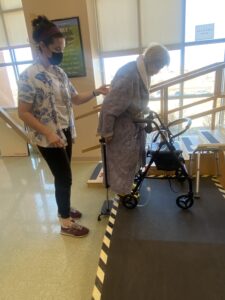

 diagnosed as a Baker Cyst, we were told that it would eventually shrink on its own. Again, not the case. By February 28th, her right knee was extremely bruised and swollen to the point of blistering and splitting open. She was again taken to the hospital, where the vascular surgeon found a bleed in the knee. After a blood transfusion, she was rushed to surgery with an extremely low hemoglobin of four (normal levels are between 12 and 16), and the race was on to save her leg. Dr Kaslow did save her leg, and after three months on a wound vac, followed by a skin graft, she is doing very well from that. We are thankful to God for putting Dr Kaslow there and for the miracle of again saving her life. After a little more than two week stay at Elkhorn Valley Rehabilitation Hospital, during which Aunt Sandy received excellent care (including having them catch and deal with another bleed in her right leg), and physical therapy, she was able to go back home. Healthy and grateful both the Elkhorn’s wonderful staff and to God!!
diagnosed as a Baker Cyst, we were told that it would eventually shrink on its own. Again, not the case. By February 28th, her right knee was extremely bruised and swollen to the point of blistering and splitting open. She was again taken to the hospital, where the vascular surgeon found a bleed in the knee. After a blood transfusion, she was rushed to surgery with an extremely low hemoglobin of four (normal levels are between 12 and 16), and the race was on to save her leg. Dr Kaslow did save her leg, and after three months on a wound vac, followed by a skin graft, she is doing very well from that. We are thankful to God for putting Dr Kaslow there and for the miracle of again saving her life. After a little more than two week stay at Elkhorn Valley Rehabilitation Hospital, during which Aunt Sandy received excellent care (including having them catch and deal with another bleed in her right leg), and physical therapy, she was able to go back home. Healthy and grateful both the Elkhorn’s wonderful staff and to God!!
During her recuperation from the skin graft, Aunt Sandy’s cataracts decided that their time had come. I took her in for an eye exam, but we were told that glasses wouldn’t help. So, surgery was scheduled, and by the middle of August, she had new lenses in her eyes. Now, it was finally time to get the Watchman device. We were told all the possible outcomes and had all the tests done. She went in for the surgery on September 19th, and when it was over, Dr Fluture came out and told me that he was at the point of thinking it would not work, because she is very small. The probe seemed to be stuck halfway across the chest. Then, another miracle from God. Suddenly, the probe popped through and they were in. The rest of the procedure went as smooth as silk, and then it was in place. Praise God!! Now, she will have about six more months on a blood thinner (Plavix), and then, if all is good, she will be off of them for good.
Aunt Sandy has no doubt in her mind that she is alive today because of the incredible grace and power of God. 
 I agree. With her double knee replacement surgeries, the repair of the bleeding ulcer, cataract surgeries, and now the Watchman device, I like to tell her that she is now “fully bionic” Aunt Sandy!! To that she just laughs. She might laugh, but when you think about it, she really is. It’s been one wild year, but Aunt Sandy is a fighter, and God had her back!! Today is Aunt Sandy’s 79th birthday!! It’s an age she wasn’t sure she was going to reach, but praise God…she has!! Happy birthday Aunt Sandy!! Have a great day!! We love you!!
I agree. With her double knee replacement surgeries, the repair of the bleeding ulcer, cataract surgeries, and now the Watchman device, I like to tell her that she is now “fully bionic” Aunt Sandy!! To that she just laughs. She might laugh, but when you think about it, she really is. It’s been one wild year, but Aunt Sandy is a fighter, and God had her back!! Today is Aunt Sandy’s 79th birthday!! It’s an age she wasn’t sure she was going to reach, but praise God…she has!! Happy birthday Aunt Sandy!! Have a great day!! We love you!!

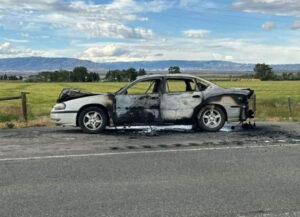 My nephew, Tucker Schulenberg has had a year beyond belief. The year started off good. Tucker was in school and had a girlfriend. He was a happy uncle his nieces and nephews. Life was getting better every day. Things had been really hard for Tucker since his mom, Rachel Schulenberg passed away on January 19, 2021, following a massive stroke. Tucker was in a really dark place for a while, but he was finally on the way out of it. He will never get over his mother’s loss, but he was healing.
My nephew, Tucker Schulenberg has had a year beyond belief. The year started off good. Tucker was in school and had a girlfriend. He was a happy uncle his nieces and nephews. Life was getting better every day. Things had been really hard for Tucker since his mom, Rachel Schulenberg passed away on January 19, 2021, following a massive stroke. Tucker was in a really dark place for a while, but he was finally on the way out of it. He will never get over his mother’s loss, but he was healing.
Then, came July 4, 2024. Tucker, his brother, Riley Birky and a couple of friends were picking up fireworks for the Independence Day celebration. Someone, no one knows who, lit a cigarette without thinking, and suddenly, 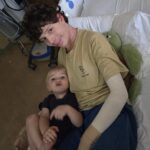
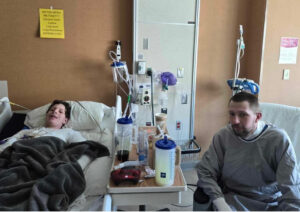 the car was engulfed in flames. The fireworks were on the floor at Tuckers feet, putting him in the worst possible place. Riley managed to pull the car over without hitting anything and began pulling the other boys out of the car. It was a lifesaving maneuver on his part, and while all the boys were burned, they were alive. The boys would spend differing lengths of time in the hospital, and have different treatments while they were there, with Tucker’s being the longest stay. Tucker also required much physical therapy to get the strength back in his legs. It’s been a long, hard road but Tucker was determined to get his life back, and he certainly did.
the car was engulfed in flames. The fireworks were on the floor at Tuckers feet, putting him in the worst possible place. Riley managed to pull the car over without hitting anything and began pulling the other boys out of the car. It was a lifesaving maneuver on his part, and while all the boys were burned, they were alive. The boys would spend differing lengths of time in the hospital, and have different treatments while they were there, with Tucker’s being the longest stay. Tucker also required much physical therapy to get the strength back in his legs. It’s been a long, hard road but Tucker was determined to get his life back, and he certainly did.
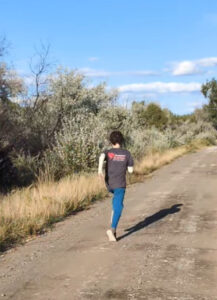
 Two months to the day, Tucker left the hospital…on his own steam. He was determined to come all the way back too, and so he has been working on running with those legs that no one was sure would walk again. He is back to school, and the Rocky Mountain High School and Middle School student council held a fund raiser called the T-shirt Game, and even made t-shirts that said Tucker Tuff. It was great to see everyone rallying around him like that, and I’m sure it inspired him to push forward in his healing process. Tucker is a strong guy, and I know he can do anything he sets his mind to. His future is bright, and I am so proud of him for sticking to it and making such an amazing come back for such a terrible accident. Today is Tucker’s 17th birthday. Happy birthday Tucker!! Have a great day!! We love you!!
Two months to the day, Tucker left the hospital…on his own steam. He was determined to come all the way back too, and so he has been working on running with those legs that no one was sure would walk again. He is back to school, and the Rocky Mountain High School and Middle School student council held a fund raiser called the T-shirt Game, and even made t-shirts that said Tucker Tuff. It was great to see everyone rallying around him like that, and I’m sure it inspired him to push forward in his healing process. Tucker is a strong guy, and I know he can do anything he sets his mind to. His future is bright, and I am so proud of him for sticking to it and making such an amazing come back for such a terrible accident. Today is Tucker’s 17th birthday. Happy birthday Tucker!! Have a great day!! We love you!!

 On October 24, 1945, the United Nations Charter, adopted and signed on June 26, 1945, came into effect. The United Nations (UN) emerged from a “perceived” need for a mechanism superior to the League of Nations in arbitrating international conflicts and negotiating peace. The escalating Second World War prompted the United States, Britain, and the Soviet Union to draft the initial UN Declaration, which 26 nations signed in January 1942 as an official stance against the Axis Powers of Germany, Italy, and Japan. It all seemed like a good idea, and perhaps was drafted with good intentions, but it is my opinion that the UN has failed miserably to accomplish any of the goals it set out to achieve.
On October 24, 1945, the United Nations Charter, adopted and signed on June 26, 1945, came into effect. The United Nations (UN) emerged from a “perceived” need for a mechanism superior to the League of Nations in arbitrating international conflicts and negotiating peace. The escalating Second World War prompted the United States, Britain, and the Soviet Union to draft the initial UN Declaration, which 26 nations signed in January 1942 as an official stance against the Axis Powers of Germany, Italy, and Japan. It all seemed like a good idea, and perhaps was drafted with good intentions, but it is my opinion that the UN has failed miserably to accomplish any of the goals it set out to achieve.
The foundational principles of the UN Charter were initially shaped during the San Francisco Conference, which began on April 25, 1945. This conference established the framework for a new international organization intended to “save succeeding generations from the scourge of war, to reaffirm faith in fundamental human rights, to establish conditions under which justice and respect for the obligations arising from treaties and other sources of international law can be maintained, and to promote social progress and better standards of life in larger freedom.” The Charter further outlined two additional vital goals. They were to maintain the principles of equal rights and self-determination for all peoples…initially intended to safeguard smaller nations at risk of being overtaken by the larger Communist powers emerging after the war, and to promote international collaboration to tackle worldwide economic, social, cultural, and humanitarian issues.
Following the war’s end, the responsibility of negotiating and maintaining peace was assigned to the newly established UN Security Council, which included the United States, Great Britain, France, the Soviet Union, and China. Each member possessed veto power. Winston Churchill implored the United Nations to employ its charter to promote a new, united Europe…a unity characterized by its opposition to communist expansion in both the East and the West. Yet, given the composition of the Security Council, achieving this proved more challenging than anticipated. I suppose that the distain felt by many people, for the United Nations, could have arisen from an impossible task, but more likely it came from flawed people who placed their own agenda ahead of the real needs of the people.
The United Nations is subject to criticism for a variety of reasons, including its policies, ideology, equality of representation, administrative practices, enforcement of decisions, and perceived ideological biases. Critics often cite a lack of success within the organization, noting failures in both preventative measures and in de-escalating conflicts ranging from social disputes to full-blown wars. Additional criticisms involve accusations of antisemitism, appeasement, collusion, promotion of globalism, inaction, and the exertion of undue influence by 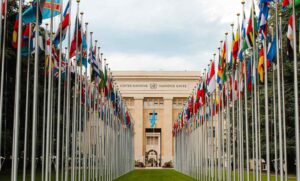
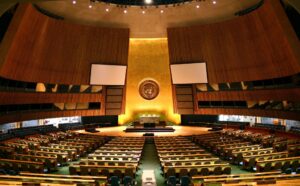 powerful nations within the General Assembly, as well as corruption and misallocation of resources. In my opinion, and that of many other people, that the UN should be dissolved, or at the very least, that the United States should withdraw and expel the United Nations from this nation. While some may disagree, this is my viewpoint.
powerful nations within the General Assembly, as well as corruption and misallocation of resources. In my opinion, and that of many other people, that the UN should be dissolved, or at the very least, that the United States should withdraw and expel the United Nations from this nation. While some may disagree, this is my viewpoint.
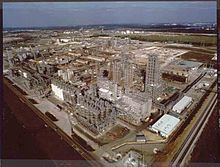 There is really no good reason to ever compromise on the safety procedures in a plant. People often think that it’s not that important to follow every safety procedure, every time…until something goes wrong. Then, they know the purpose of the safety procedures. On October 23, 1989, 23 people lost their lives in a series of explosions sparked by an ethylene leak at a factory in Pasadena, Texas. It was determined that the blasts, which took place at a Phillips Petroleum Company plant, were caused by inadequate safety procedures.
There is really no good reason to ever compromise on the safety procedures in a plant. People often think that it’s not that important to follow every safety procedure, every time…until something goes wrong. Then, they know the purpose of the safety procedures. On October 23, 1989, 23 people lost their lives in a series of explosions sparked by an ethylene leak at a factory in Pasadena, Texas. It was determined that the blasts, which took place at a Phillips Petroleum Company plant, were caused by inadequate safety procedures.
The Phillips 66 Chemical Complex in Pasadena houses a polyethylene reactor that synthesizes essential chemical compounds for plastic production. This facility generates millions of pounds of plastic each day, which are then utilized in manufacturing toys and various containers. Always looking to better their bottom line, Phillips outsourced a significant portion of the plant’s essential maintenance work to reduce expenses. Fish Engineering and Construction, the main subcontractor, already had a less-than-exemplary reputation before the disaster on  October 23rd. Previously, in August, a Fish worker-initiated maintenance on gas piping without isolating it, leading to the release of flammable solvents and gas into a work area. The resulting ignition caused the death of one employee and injuries to four others.
October 23rd. Previously, in August, a Fish worker-initiated maintenance on gas piping without isolating it, leading to the release of flammable solvents and gas into a work area. The resulting ignition caused the death of one employee and injuries to four others.
Then, at 1:05pm, on October 23rd, during maintenance work on the plant’s polyethylene reactor, issues emerged once more. A valve was improperly secured, leading to the release of 85,000 pounds of highly flammable ethylene-isobutane gas into the plant around 1pm. The absence of detectors or warning systems failed to alert anyone of the looming catastrophe. In under two minutes, the vast gas cloud exploded with the force equivalent to two-and-a-half tons of dynamite. The blast was heard for miles in every direction, and the ensuing fireball could be seen from at least 15 miles away. At Phillips, twenty-three workers lost their lives and an additional 130 sustained serious injuries when the initial explosion triggered a series of subsequent explosions.
 The initial emergency response came from the Phillips Petroleum Company’s fire brigade, who were quickly supported by the Channel Industries Mutual Aid (CIMA) team. Collaborating governmental entities included the Texas Air Control Board, Harris County Pollution Control, the Federal Aviation Administration (FAA), the US Coast Guard, the Occupational Safety and Health Administration (OSHA), and the US Environmental Protection Agency (EPA).
The initial emergency response came from the Phillips Petroleum Company’s fire brigade, who were quickly supported by the Channel Industries Mutual Aid (CIMA) team. Collaborating governmental entities included the Texas Air Control Board, Harris County Pollution Control, the Federal Aviation Administration (FAA), the US Coast Guard, the Occupational Safety and Health Administration (OSHA), and the US Environmental Protection Agency (EPA).
Investigation of the disaster revealed that despite the Occupational Safety and Health Administration (OSHA) citing Phillips for multiple serious safety violations in the past, a comprehensive inspection of the plant had not been conducted since 1975. Testimonies also uncovered that the plant was susceptible to disaster due to insufficient safety measures during maintenance. Nevertheless, even knowing all that, Phillips and its managers were never required to face criminal charges.


